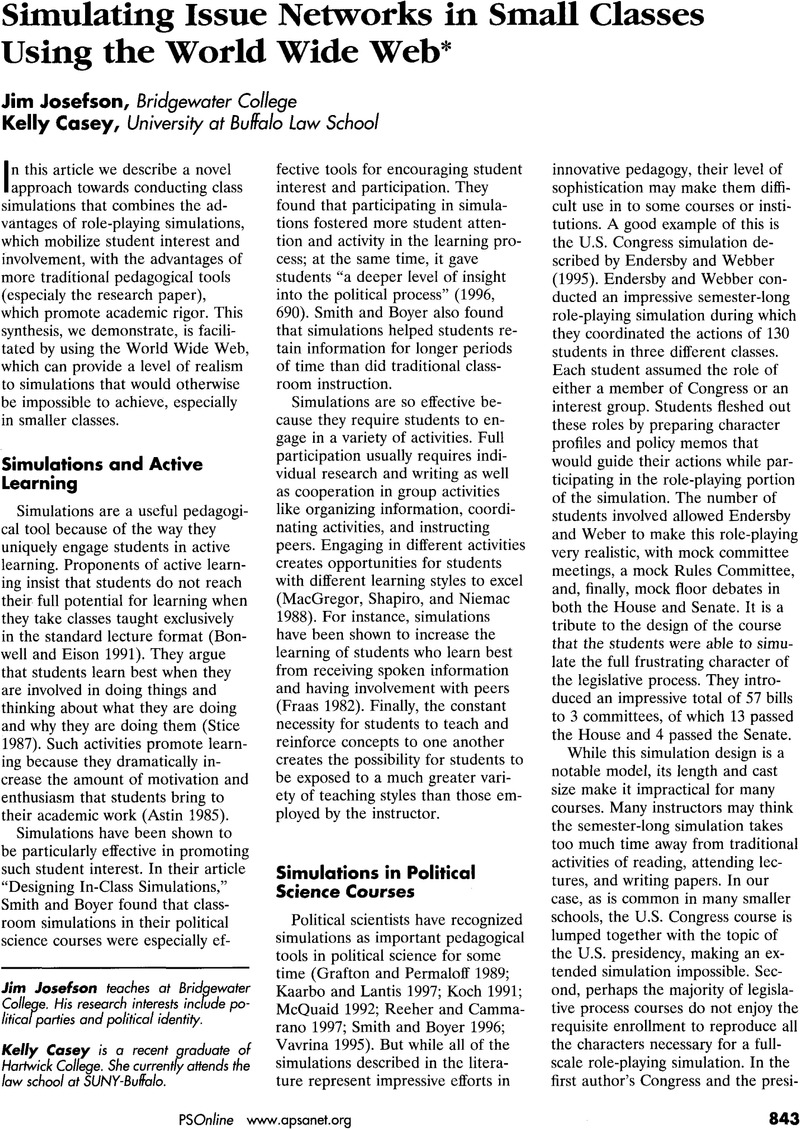Crossref Citations
This article has been cited by the following publications. This list is generated based on data provided by Crossref.
Stover, William James
2005.
Teaching and Learning Empathy: An Interactive, Online Diplomatic Simulation of Middle East Conflict.
Journal of Political Science Education,
Vol. 1,
Issue. 2,
p.
207.
Auerbach, Arthur H.
2013.
United States Supreme Court Confirmation Simulation: Learning through the Process of Experience.
PS: Political Science & Politics,
Vol. 46,
Issue. 04,
p.
808.



